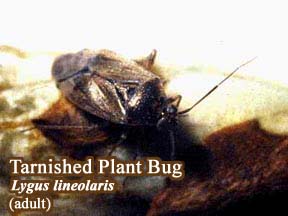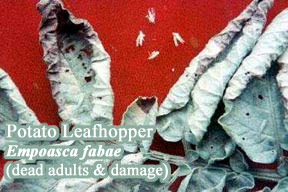Hollyhock (Alcea)
Plant Health Problems
See Perennials for a detailed discussion of problems that may occur and are common to most herbaceous ornamentals.
Diseases caused by Fungi:
Rust, Puccinia malvacearum.
This is the most common and destructive disease on hollyhocks. Infections can develop on the leaves, petioles, stems, and green flower parts. Symptoms first appear as a pinpoint brown dot which rapidly enlarges into a circular spot. Lesions appear as yellow to tan spots on the upper surface of the leaf. Diagnostic symptoms then develop on the lower leaf surface as brown, raised pustules. As these mature, they break open to reveal the rusty-colored spores for which this disease gets its name. As they mature, the spores change to gray. When infection is heavy, this disease can be very disfiguring since leaves shrivel and whole plants can appear blighted. Several other weedy species of Malva are also susceptible and can serve as key sources of the fungus.
Control of this common disease can be very difficult and sanitation is extremely important. As soon as the flowering season is over, plants should be cut back and all plant material and leaf fragments carefully removed from the planting bed. When new growth emerges in spring, it is helpful to pick off any symptomatic leaves as soon as they are detected. Varieties differ in susceptibility so use of resistant varieties can be effective to reduce infection. Fungicide sprays are also very helpful to control this disease and applications can be made as soon as new growth emerges in the spring. Among the compounds registered for use in Connecticut are chlorothalonil, mancozeb, triadimefon, and sulfur. Consult the label for dosage rates and safety precautions.
Leaf spots, Cercosporella, Ascochyta, Alternaria.
Symptoms develop on leaves and can be circular to angular in appearance. These spots are typically scattered over the leaf surface although the size, color, and margins of the spots vary with the specific fungus. When infections are heavy and the spots coalesce, leaves appear tattered.
Efforts to maximize plant vigor by fertilizing and watering are helpful. However, watering should be done early in the day to give the foliage a chance to dry before nighttime. It is also helpful to pick and remove symptomatic leaves as soon as they develop. Although not usually necessary, applications of fungicides can be made when new growth emerges in the spring. Among the compounds registered for use in Connecticut are chlorothalonil and thiophanate-methyl. Consult the label for dosage rates and safety precautions.
Insect Problems:
Imported longhorned weevil, Calomycterus setarius.
The grayish adults are about 1/8" long. They emerge from late June through July and early August. Eggs are laid in the soil, and larvae are present from midsummer until June of the following year. They feed on the small roots of host plants but more often on those of legumes or on organic matter. Both wild and cultivated plants are attacked. Usually, the adults feed on the upper surface at the edge of the leaves and on flowers in sunlight or shade. Host plants include annuals, perennials, shrubs, deciduous trees, and evergreens. Larvae may be controlled by drenching insect pathogenic nematodes around the roots.
Japanese beetle, Popillia japonica.
This beetle, in the adult stage, feeds upon a great variety of trees and plants, including hollyhock. The beetle is ½" long, bright, shining green, with copper colored wing covers. Two white spots on the tip of the abdomen show beyond the ends of the wing covers, and there are five white spots formed by patches of white hairs on each side of the abdomen. The beetles begin emerging in late June but their greatest abundance is usually about the middle of July. During drought periods, populations of Japanese beetle are drastically reduced.
Japanese beetle traps containing floral and sex attractant lures are readily available at home and garden centers. These traps may help reduce the overall number of beetles. However, beetles often land and feed on plants close to traps, so traps should be placed well away from valued plantings. Feeding on hollyhock foliage can be prevented by using sprays of acephate, azadirachtin, carbaryl or malathion, which are among the products registered for use against this pest in Connecticut. Imidacloprid, applied early in the season as a soil drench, will provide season-long systemic control. Consult the labels for dosage rates and safety precautions. Larvae develop in turf, so treatment of lawn areas should reduce the numbers of beetles. See Lawns, oriental beetle.
Painted lady, Vanessa cardui.
The caterpillar feeds on the leaves of hollyhock, at first under a web, then on the upper surface of a leaf. Sometimes it webs together two or more leaves and lives inside. It reaches a length of about 1 1/4", and varies from light green to light brown mottled with black, with a light dorsal stripe and with a yellow stripe along each side. It is covered with grayish spines. The butterfly has a wingspan of about 2 1/2" and is orange red with black and white markings. This butterfly has two generations in the northern states. Control is seldom required.
 Plant bugs.
Plant bugs.
The fourlined plant bug, Poecilocapsus lineatus, and tarnished plant bug, Lygus lineolaris, lay eggs in soft stems. They hatch about the middle of May and the young bugs suck the sap from the tender leaves of hollyhock and many other plants. They molt five times and when mature, about the middle of June, they have wings and are nearly 1/3" long. The fourlined plant bug is yellow-green, marked lengthwise on the wings with four black stripes alternating with three green stripes. The injury to the leaves consists of sunken areas around the punctures. These areas later appear as circular transparent spots and finally as circular holes. The tarnished plant bug is mottled brownish, 1/5" long, with a yellow "Y" shape pattern on its back. There is one generation each year of the fourlined plant bug and two to five generations yearly of the tarnished plant bug. The nymphs can be managed by spraying with azadirachtin, ultrafine horticultural oil, insecticidal soap or malathion, which are among the compounds registered for control of this pest in Connecticut. Consult the labels for dosage rates and safety precautions.
 Potato leafhopper, Empoasca fabae.
Potato leafhopper, Empoasca fabae.
These 1/8" long, wedge-shaped, hopping insects suck plant sap from the undersides of leaves. Affected leaves curl up at the tip, turn brown and die. Both adults and nymphs are damaging. When needed, sprays of carbaryl, which is among the compounds registered for use against this pest in Connecticut, applied when insects are seen provides control. Imidacloprid, applied as a systemic to be taken up by the roots, will also provide season-long control. Consult the labels for dosage rates and safety precautions.
Redbanded leafroller, Argyrotaenia velutinana.
These leafrollers injure the foliage of hollyhock. Pupae of the red-banded leafroller overwinter in sheltered areas. The moths, which are 1/2" long and have a red band across the wings, emerge in April. Females lay masses of eggs on the plants, and the caterpillars hatch at about the first week of June. The green caterpillars feed along the midvein or larger veins while they live in a flimsy white web which is expanded as the larva grows. Caterpillars mature during June and form pupae in sheltered locations, such as folded leaves. The red-banded leafroller has three generations per year. Females lay the eggs of the second and third generations mainly on the upper surfaces of leaves. Caterpillars of these generations feed on the lower surfaces of leaves. Adult flights of the red-banded leafroller can be monitored with pheromone traps. Bacillus thuringiensis or spinosad, which are among the compounds registered for use against this pest in Connecticut, may be applied when larvae are present. Consult the labels for dosage rates and safety precautions.
Stalk borer, Papaipema nebris.
The larva of this insect occasionally tunnels in hollyhock. As a rule its presence escapes notice until the plant begins to wilt. Then it is too late for the plant to recover. The larva tunnels up and down inside the stem, and the top portion usually wilts and later dies. There is one generation each year. The moths emerge in September and October and lay eggs on the stalks of their food plants, in which stage the insect passes the winter. The eggs hatch in May or early June. The young larva begins to feed on the leaves of the nearest food plant, and later tunnels in the stem. The mature larva is nearly 1 ½" long and is grayish brown with one longitudinal white stripe on top and two white stripes on each side. On the front half of the body the lateral stripes are interrupted, and the lower brown stripe extends forward onto the side of the head.
Burning all the old stalks, if allowed, and destroying weeds at the edges of the garden helps control this insect. When needed, methoxychlor, which is among the compounds registered for use against this pest in Connecticut, applied as a dust, in June, should control this pest. Consult the label for dosage rates and safety precautions.
Twospotted spider mite, Tetranychus urticae.
This pest infests the undersides of the leaves, which become light yellow in color, and the plants have a generally unhealthy appearance. Sometimes the mites form webs, which more or less enclose the upper as well as the lower leaf surface. Among the compounds registered for control of this pest in Connecticut are insecticidal soap and ultrafine horticultural oil. Spraying with insecticidal soap will give sufficient control if applied at least twice at 7-10 day intervals. The predatory mite, Neoseiulus fallacis, is most commonly found feeding where there are mite infestations. A single application of ultrafine horticultural oil (1% dilution) can be effective if predatory mites are present. Special care should be taken with soap or oil to obtain thorough spray coverage, because they only work on contact. Hexygon or abamectin are effective restricted use products. Consult the label for dosage rates and safety precautions. Avoid applying carbaryl or pyrethroids, which tend to be much more toxic to the predators than to the pest spider mites.

